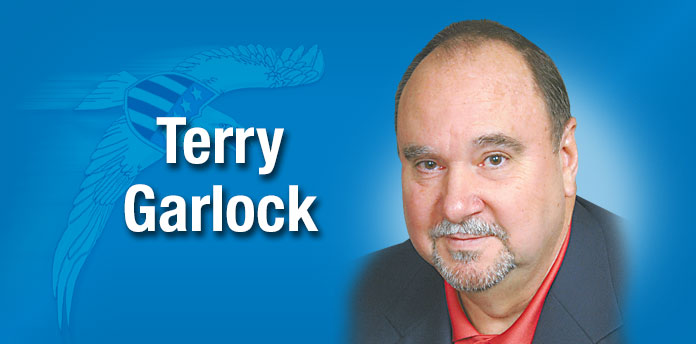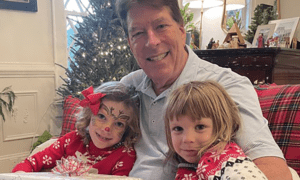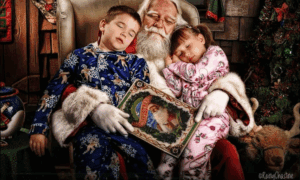I have on the toolbox in my truck bed a small sticker of the Vietnam Service Ribbon, a horizontal bar with a yellow background, vertical green strips at either end and three vertical red bars in between. That sticker faces the rear for drivers behind me.

Most people have no idea what it means but when veterans of that war catch a glimpse of that sticker half the size of my hand, they may not know me but they know in a heartbeat we share the experience of playing a role in that war.

The license plate spot on my front bumper has a printed plate with the same Vietnam Service Ribbon color patterns in the background, still immediately recognizable to Vietnam vets, and the plate shows a superimposed image of the Cobra helicopter gunship I flew in Vietnam. That image shows the nose turret minigun firing a stream of bullets, a bit over the top if the artist had asked my opinion, but after all it was a gunship.
Now and then while sitting in my parked truck I notice someone quickly glancing at that image as they walk by, sometimes with a quick frown, possibly thinking with disapproval, “Why do you need to advertise killing?”
But neither the sticker on my rear toolbox nor the plate on the front bumper, nor the shirts or sweatshirts I wear with the embroidered Vietnam Service Ribbon or Purple Heart, are intended for the public at all. They are open invitations for other Vietnam vets who instantly recognize the meaning to introduce themselves, a way to make contact with “brothers and sisters.” Friends not yet met. And does it ever work! I’ll give you an example how well it worked for a friend.
I was recently reminded of the memory of Doug Field when his widow, Arline, told me she is moving out of our neighborhood to be closer to family. Doug was not only a neighbor, he was a grunt (infantry soldier) in Vietnam. He died in 2017, and I miss him. He had a natural kind, polite, courteous and gracious manner, unintentionally reminding me that I have to work pretty hard at those characteristics since my nature has rough edges.
As I got to know him, I learned that Doug tended to get a bit jumpy when the calendar nudged near Sept. 17 each year, the anniversary of a terrible night for him in Vietnam in 1966. He was part of a 15-man 101st Airborne “Screaming Eagles” unit, dug in for a night in the jungle on what the map called Hill 86, near a little village named Tuy An. This operation called “Nathan Hale” was trying to find the elusive enemy.
At half past midnight in a downpour, the well-concealed enemy suddenly attacked in an overwhelming force of about 300 heavily armed men, and Doug’s small unit was overrun. While the enemy walked around kicking American wounded and shooting them dead, Doug survived only by successfully playing dead.
The next morning a 101st Medevac helicopter finally got past enemy fire to pick up wounded, and Doug was one of three survivors rushed to a hospital; the other 12 were dead.
Memories of that worst day of his life haunted him with survivor’s guilt, an affliction many of us brought home. How could Doug tell that story to any civilian in a way they would understand what he went through? How would he find the words even if he could keep his composure while unwrapping the most intense and complex emotions of his life, hidden away buried deep inside? So, like so many others, he kept his story to himself, knowing the vast majority wouldn’t care anyway.
Like thousands of other guys, including me, Doug wished he could find the Medevac crew that picked him up so he could shake their hand, look them in the eye to say his heartfelt thanks, and to buy their drinks.
But the Medevac/Dustoff helicopter crews were too busy zipping into hot spots to snatch up our wounded then zig and zag at treetop level to make themselves a tricky target, deliver our wounded to hospitals then stand by for the next radio call from places where Americans were hit and possibly dying and they scrambled to fly again. They didn’t have time to keep the kind of records that would make it possible for wounded to find their rescuing crew.
And then one day in 1998, in the Peachtree City Post Office parking lot 32 years after that terrible night, Doug spotted a car with a bumper sticker with the Airborne Eagle insignia of the 101st. He stepped over to introduce himself to Ron Martin, also living in Peachtree City, to commiserate as a fellow Screaming Eagle.
The conversation took one turn — Ron was a Medevac pilot ln Vietnam — and then more turns and, by comparing notes they found that, against a bazillion to one odds, Ron had been the Medevac pilot that picked up Doug and the two other wounded survivors and flew them to a hospital. A new friendship was formed with a bond that went beyond tight.
From the Vietnam insignia on my truck and my shirts and sweatshirts, I have had so many guys, and some women too, open the conversation about the things we did in the war, where and when we served. Guys have told me our gunships saved their bacon many times.
But it’s a mutual admiration thing and I have had the chance to tell them, “You guys on the ground — with the snakes and bugs and leeches and booby traps and enemy — were our only reason to climb in the cockpit after a bad day. Our job was to do everything we could to help you kick the enemy’s butt, and it was PERSONAL to us to pull out all the stops to keep you guys alive.”
New contacts with Vietnam vets, whether from my insignia or otherwise, sometimes bring friendships that will last a lifetime: Doug Field, Tony Armstrong, Mike King, Wayne Franz, Wayne King, Skip Ragan, Larry Prestige, Jim Sells, Fred Smith, George Harrison and others. Fred and George both have a ton of combat cockpit time as F4 fighter-bomber pilots in Vietnam, and George flew F16s in the Gulf War.
As a retired Air Force two-star general, George’s title is Maj. Gen, USAF (Ret), and he has quite a record. Just cherry-picking a little, he has multiple degrees, had many military jobs and commands, has flown over a hundred different type aircraft, personally briefed Presidents Ronald Ragan, George Bush Sr. and Bill Clinton on military matters.
He teaches kids to fly gliders, he is on boards at Georgia Tech and the Museum of Aviation at Warner Robbins, and contributes to our community and society in many other ways.
I’m singling out George for a reason. Despite his many accomplishments he has a modest and open, welcoming style. George has a bottomless well of jokes that are chock full of wit, and he delights in using that razor sharp wit to give me the cuts he thinks I deserve, unless he’s just trying to get a rise out of me, at our weekly coffee klatch.
George is not tall and has heard every “short” joke on the planet. He has a pocket full of his own short jokes, but his usually have a hefty counter-punch. Last week when a short joke came up, I said to him, “If height were measured in accomplishments, you’d always be the tallest man in the room.” And I meant it.
I’m proud to have friends like George and the others named here plus a hundred others, some having made contact with me because of the Vietnam insignia they recognized on my truck, my shirt or my sweatshirt. Those are perhaps unusual contact invitations, but they work even though the public won’t understand what they mean, and in my case even though I served in the US Army only four years.
[Terry Garlock writes occasional coluns for The Citizen.]













Leave a Comment
You must be logged in to post a comment.